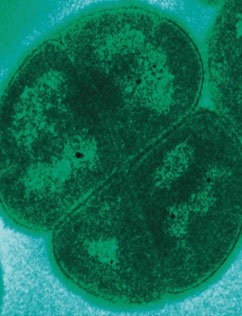Bacteria & Viruses
What is bacteria?

It is thought that bacteria were among the earliest forms of life that appeared on Earth billions of years ago.
Scientists think that they helped shape and change the young planet's environment, eventually creating atmospheric oxygen that enabled other, more complex life forms to develop. Many believe that more complex cells developed as once free-living bacteria took up residence in other cells.
Bacteria organisms are made up of just one cell. They are capable of multiplying by themselves, as they have the power to divide. Their shapes vary, and doctors use these characteristics to separate them into groups.
Bacteria exists everywhere, inside and on our bodies. Most of them are completely harmless and some of them are very useful. But some bacteria can cause diseases, either because they end up in the wrong place in the body, or simply because they are designed to invade us.

Bacteria can live on or in about every material and environment on Earth from soil to water to air, and from a house to an arctic ice to volcanic vents.
Each square centimeter of human skin averages about 100,000 bacteria. A single teaspoon of topsoil contains more than a billion (1,000,000,000) bacteria. And they can only be seen with the help of a microscope that magnifies them one thousand times.
They're an amazingly complex and fascinating group of creatures. Bacteria have been found that can live in temperatures above boiling point and in cold temperatures that could freeze blood.
They "eat" everything from sugar and starch to sunlight, sulfur and iron. There's even a species of bacteria called Deinococcus radiodurans that can withstand blasts of radiation 1,000 times greater than what would kill a human being.
What is a virus?

Viruses are not visible to the naked eye due to it being too small. They are unable to multiply on their own and require the need to invade other host cells, so that it can take over there structure in order for it to make more virus particles.
Viruses are a bit of genetic material packaged in a protective coat. The genetic material can either be DNA or RNA depending on the type of virus. They are capable of latching onto cells and getting inside them. The cells of the mucous membranes, such as those lining the respiratory passages that we breathe through, are particularly open to virus attacks because they are not covered by protective skin.
They range in size from 20 to 250 nanometers (one nanometer is one billionth of a meter). To see viruses, scientists need to use an electron microscope that magnifies them one million times their normal size.